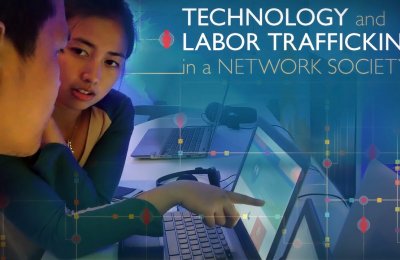By Jackson DeMos
Two years ago, at the request of Dean Ernest J. Wilson III, the USC Annenberg Facilities & Technology department began solving the problem of shrinking server space for the School's multiple websites and constantly increasing data.
Today, USC Annenberg boasts a new system that has been featured in recent technology conferences such as VMworld 2010 (videos here and here) because of its success.
Frank Miuccio (featured in videos), director of USC Annenberg's management information systems, led a team that included Jenny San Angel and Adrian Wong in creating a large virtual-server foundation that is expandable in terms of space and possibilities. The team also worked with the Annenberg School at the University of Pennsylvania to build backup servers hosted at both sister schools in case of a disaster at either.
"We could build a skyscraper on the foundation we built," Miuccio said. "It's a big, big change. With these servers we could create virtual machines throughout the building so students, faculty and staff could log-in at any computer or device and get the exact same look and feel. This is just the start."
The team installed VMware virtual platforms so that the IT team could run multiple servers on very little physical space.
"We used to need a physical box for each server we bought, and we were running out of space," Miuccio said. "Now that we upgraded to VMware, we're not tied to physical boxes and we can easily create servers. By virtualizing, we now have a whole rack (shown pictured with Miuccio, bottom left) available. It's cost effective and energy efficient."
The team also installed an EMC Celerra NS-120 storage system.
"It shows we’re being innovative at Annenberg by learning to use technology in different ways to meet our needs," Miuccio said. "We're a leader in using this technology, and are planning everything from a solid foundation with the right equipment to keep growing. We're not waiting around and falling behind."
The Annenberg schools at USC and Penn will transfer data through a virtual private network (VPN), which allows the schools to send data at the rate of about 1.5 megabits per second. Minimal amounts of data are sent between the schools because of a switch to an Avamar backup system that only sends new or different data each during each transfer. Because the backup is entirely digital, USC Annenberg no longer has to store eight years of physical tapes that waste space and environmental resources.
"We don’t have to worry about our backup system anymore," Miuccio said. "A backup is something you want to work and be there and not worry about. You want to worry about the other stuff, like what’s the next or newest device you have to support. If we do have a disaster, though, we could get the website up and running from the server at Penn and get information out to students and parents."










